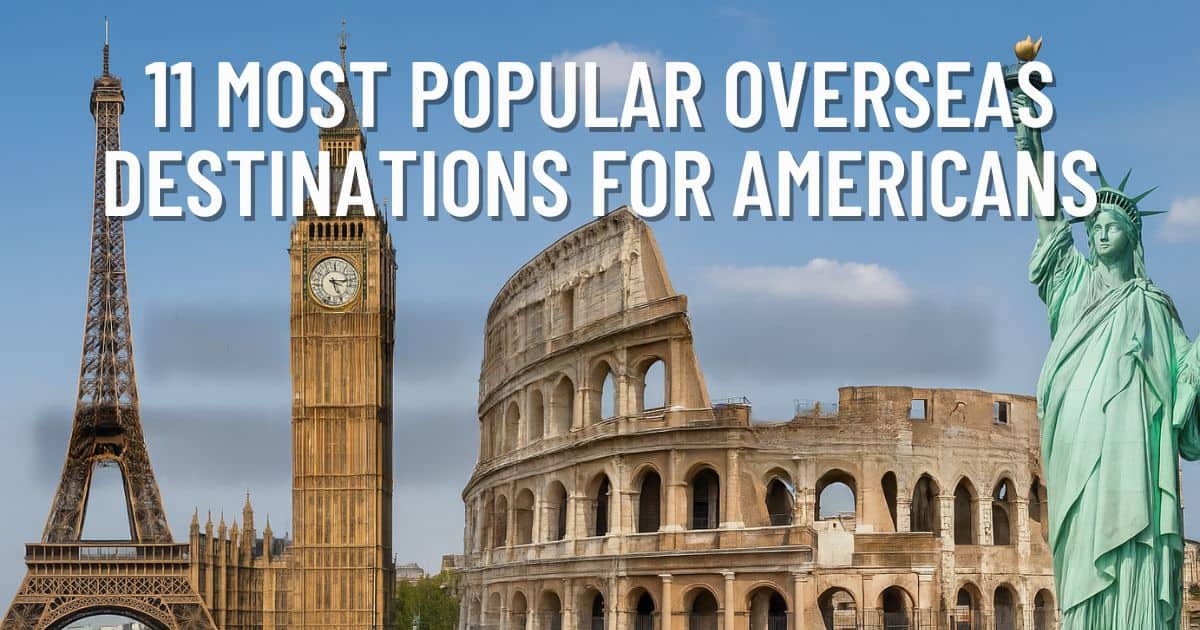There often seems to be confusion over whether a flight is still considered a domestic flight if it flies over an ocean or if, in flying between two airports in the same country, the flight overflies another country.
Read on to find out what does a domestic flight mean along with more information and statistics about them.
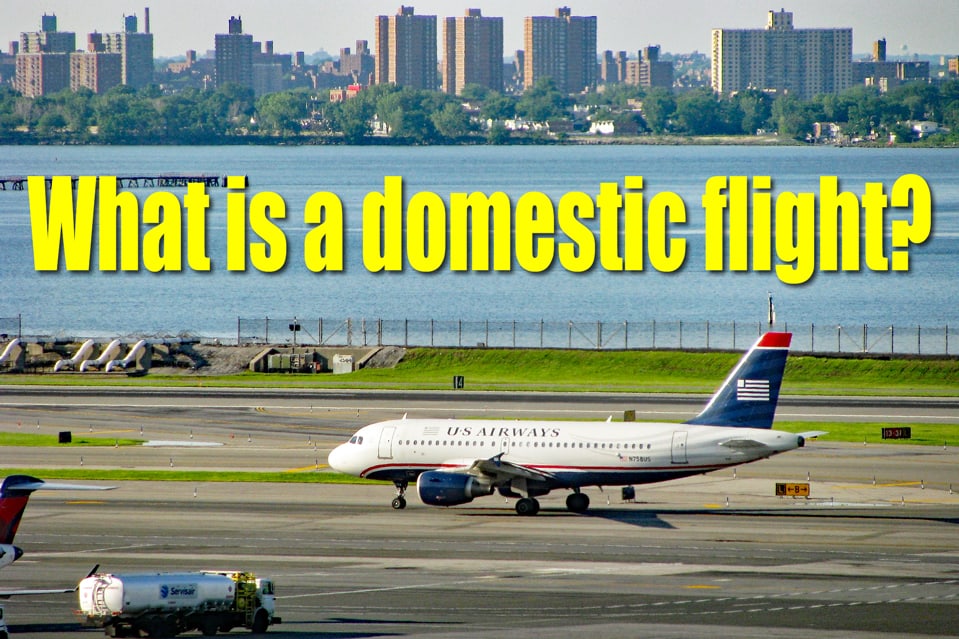
The Quick Answer to What is a Domestic Flight: Domestic flights are regarded as being one that starts and ends in the same country, without any stops en-route in another country. If in doing so a flight needs to fly over another country or an ocean they are still considered to be domestic flights.
Contents
Domestic Flight Meaning
Domestic flights meaning refer to air travel within the borders of a specific country. In aviation, domestic flights operate solely within a nation’s territory, connecting various cities and regions. These flights cater to the needs of individuals traveling for business, leisure, or personal reasons within their own country.
Domestic flights are typically shorter in duration compared to international flights, as they do not involve crossing international borders. They play a crucial role in facilitating local transportation and supporting economic growth within a country. For instance, in the United States, domestic flights are essential for connecting major hubs, facilitating commerce, and enabling individuals to explore different regions.
Are domestic flights short?
How short the flight might be will depend on the size of the country where it takes place. A domestic flight can never be very long in a small country, but it can obviously be in a larger one.
One of the longest domestic flights in a large country like the US is a direct flight between Miami and Hawaii, which would take approximately 10 hours.
Equally, domestic flights can be very short. A domestic flight in the Scottish islands from one island to another (Papa Westray to Westray) only takes one minute, as it is a very short distance—less than 2 miles from takeoff to landing! It is the shortest scheduled flight in the world.
Below is a video of a journey on that flight on Loganair Airline (it won’t take long to watch!):
Can domestic flights overfly another country?
In some situations, a flight would still be considered domestic if its route means that from its departure to its destination airport, both situated within the same nation, it overflies another country.
An example of this would be a flight from somewhere in the lower 48 States to Alaska, which would probably fly over Canada to get there but still be classed as a domestic flight.
What is the difference between domestic and international flights?
The main differences between domestic and international flights are:
- Domestic flights fly between two airports, both of which are within the same country
- International flights take off from one country but land in another country. This normally involves passing through both immigration and customs on arrival.
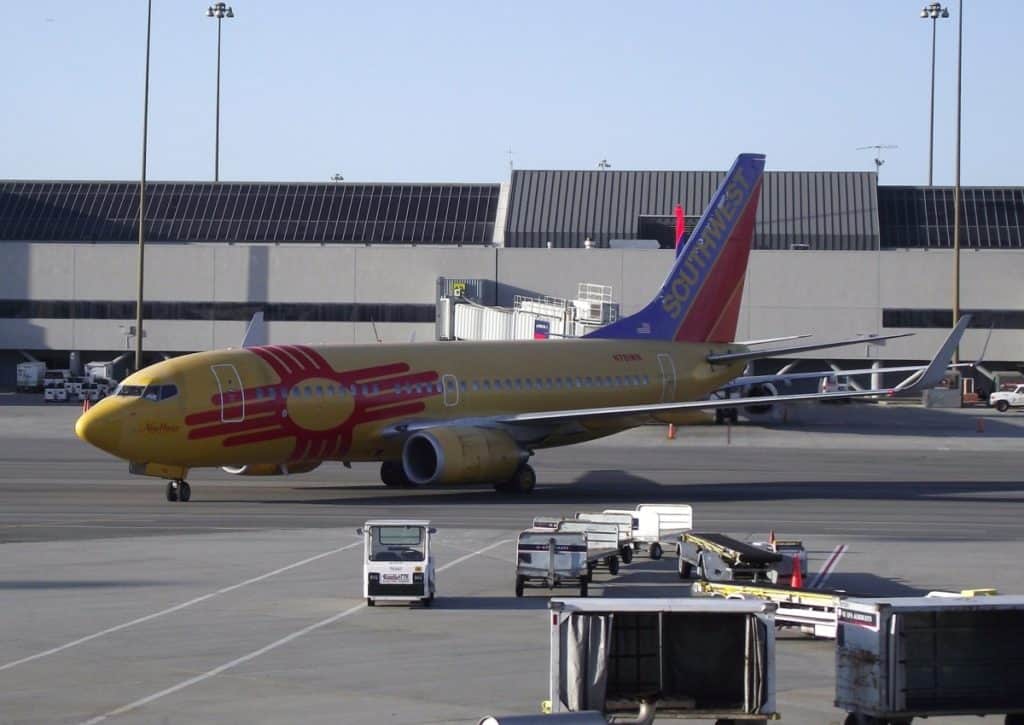
Are flights between the US and Canada considered domestic flights?
Although the US and Canada may be neighbors, any flights between the two will not be considered domestic but international. You will have to pass through immigration at some stage in the journey.
It will also be necessary to pass through Customs and declare any required items to the customs official.
Which country has the most domestic flights?
Unsurprisingly, the US has the most scheduled domestic flights in the world. The FAA estimates there are around 44,000 domestic flights daily in the US. Source: FAA – Air Traffic By Numbers
The US is a large country with a huge volume of business travel between cities. In most areas of the US, there are few viable alternatives to travel quickly from city to city if the distance is significant.
In some other countries, there are fast rail links that route from city center to center, which can often be quicker than flying (largely because it eliminates the need to travel from a city center to an airport outside the city to catch a flight and then the same journey into the city center at the other end.
Some small countries only have one airport, so they do not have domestic flights.
Which airline has the most domestic routes?
Although this can vary from time to time, American Airlines currently operates the most significant number of routes within the US and has the largest share of the US domestic flight market. However, United Airlines and Delta Air Lines are not far behind.
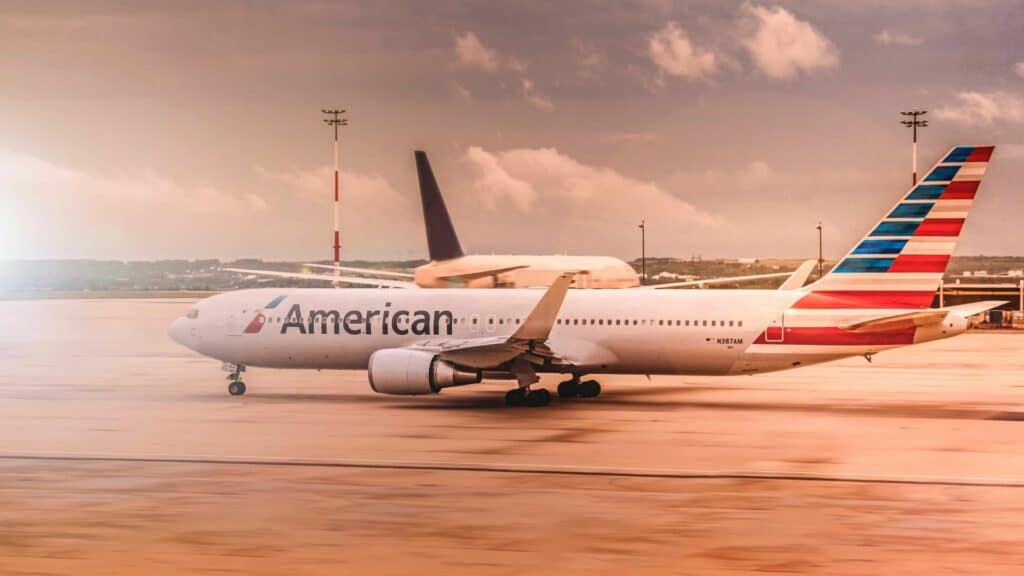
Do you need a passport for domestic flights?
A passport is not necessary to fly on domestic flights within the US, although one may be required when you fly domestically in some other countries.
In the US, all adults (18 and over) must show valid photo identification to be allowed to fly on domestic flights.
These need to be photo IDs, and they can be driver’s licenses, passports (US or foreign), permanent resident cards, US Department of Defense IDs or some other approved form of ID.
For a complete list, see the Transport Security Agency’s guide – TSA Valid Identification.
Check the relevant countries’ websites for regulations regarding the documentation required for domestic flights in other countries. One thing is for sure: a valid passport is always acceptable for domestic travel, and more often than not, a driver’s license.
Do you go through customs on a domestic flight?
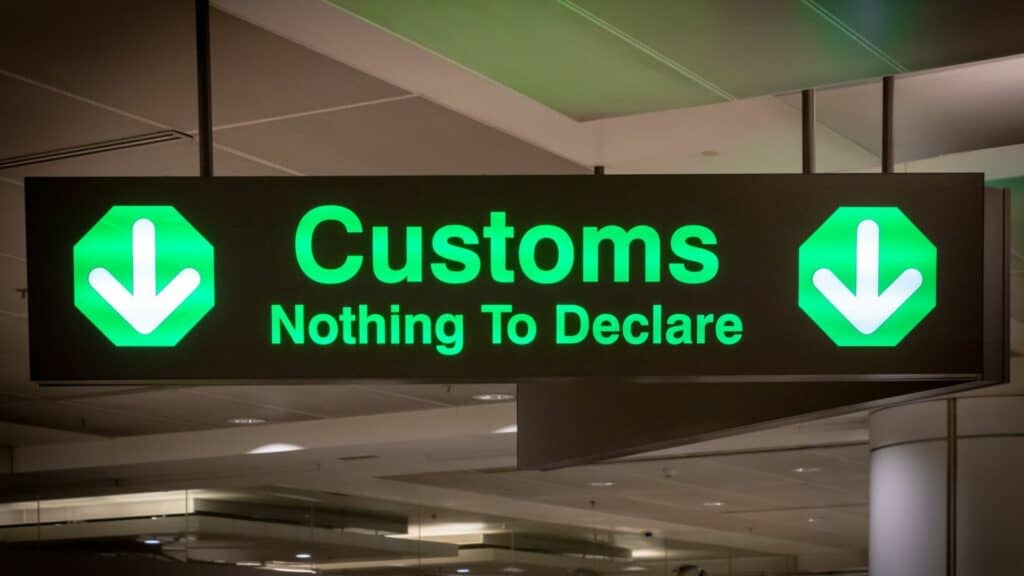
When you fly domestically, you are not leaving or entering another country, so you do not have to go through customs (or immigration).
However, if you are on the domestic leg of an international flight, you will need to. For example, if you fly from Washington to London via New York.
Do you get food on domestic flights?
International and domestic flights are no different regarding a meal service, as the flight length determines this, not whether they are international or domestic flights.
You would certainly get food on long domestic flights, just as you would on long international flights. From Miami to Hawaii, you would probably have at least two meals.
It is pretty unlikely on the one-minute flight to the Scottish Islands described above unless the cabin crew is extremely efficient and you are a champion fast-food eater.
Can you take food on a domestic flight?
There is no difference between flying internationally or domestically when taking food on a plane, either to eat during the flight or to take it to your destination.
Read also: Can you take food on a plane?
Can I lock my luggage on a domestic flight?
You can lock your luggage on a domestic flight. Ideally, you should use a TSA-approved luggage lock so that, if security officers need to search the bag, they can open the bag using their master key without breaking the lock.
Read also: TSA-approved luggage locks
How much cash can you carry on a domestic flight?
Although there is no limit on the amount of cash you can take on a domestic flight with you, you may be asked by a TSA officer to show where the money came from.
Summary
A domestic flight, also known as domestic travel, is a flight within the borders of a specific country. In the United States, domestic flights are flights that operate between different cities within the country. A domestic flight does not involve crossing international borders unless merely flying over..
For example, if someone were to fly from Los Angeles to New York City, it would be considered a domestic flight since both cities are within the United States. Therefore, a domestic flight means a flight that takes place solely within the boundaries of a particular country, such as the USA.
FAQs
Is Puerto Rico a domestic flight?
Air travel between mainland USA and Puerto Rico is considered a domestic flight.
Is Hawaii a domestic flight?
Since Hawaii is a US State, flying from anywhere in mainland USA to Hawaii will be considered a domestic flight.
Can you get duty-free on domestic flights?
As you are not traveling internationally, you cannot purchase duty-free goods at the airport or on the flight.
How many domestic flights per day?
According to the FAA, there are more than 44,000 domestic flights in the US per day, the highest number within one country globally.
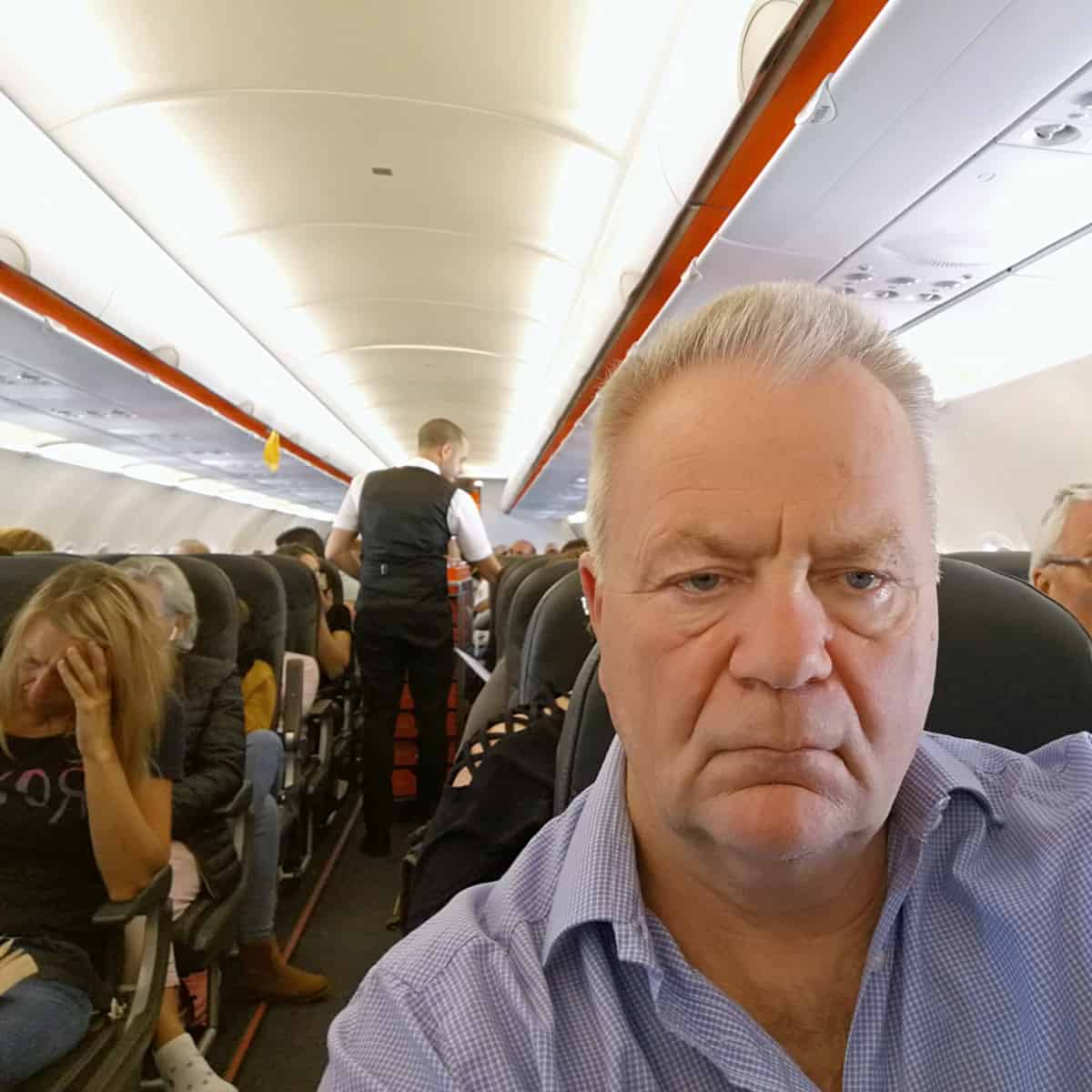
I have been traveling around the world by air since the early 70s and living overseas too. I worked for British Airways for a number of years and I am also a private pilot. About Me

